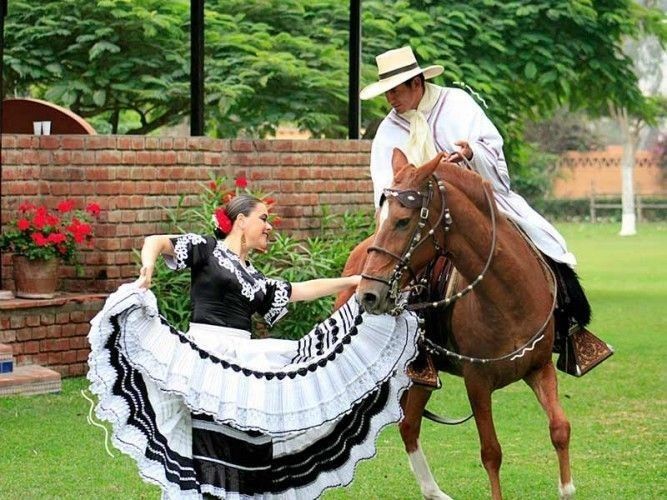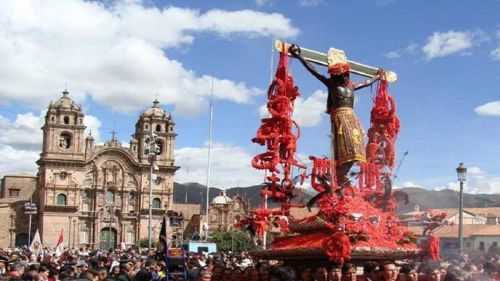Each year around mid- to late-April the National Association of Breeders and Owners of Peruvian Paso Horses (ANCPCPP) organizes the Concurso Nacional Oficial del Caballo Peruano de Paso (the National Peruvian Paso Horse Competition), one of the two most important horse competitions of the country in Mamacona near Pachacamac, about 30 km (19 miles) south of Lima; the other one is held during the International Spring Festival in Trujillo, usually in September.
Horses were introduced to Peru only about 500 years ago by the Spanish conquerors and used mainly for transportation on the vast sugar and cotton plantations in northern Peru and in the arid coastal desert stripe in southern Peru. So, horses were needed that were comfortable to ride, strong and sturdy, with stamina and some temperament.
The foundation bloodstock of the Peruvian Paso horse comprised Spanish breeds such as ambling Jennets known for their naturally ambling gait (special style of walking) and compact build, the Andalusian known for their strong build and elegance, and Berber horses known for their stamina and hardiness. As no other outside breeds were introduced, Peruvian breeders kept the bloodlines of their horses clean and selectively bred primarily for gait, conformation and temperament.
The result was the Peruvian Paso Horse, a hot-blood horse of pure Spanish origin which today we consider as one of the purest breeds and the only naturally gaited breed left in the world.
The Peruvian Paso Horse is a beautiful, elegant and graceful breed of medium size, compact, muscular and extremely powerful, high-spirited, but easy to handle. Its trademark, however, it doesn’t trot, but has a unique inherited four lateral gait making it one of the most comfortable and smoothest riding horses in the world. Breeders in Peru are proud that their Peruvian Paso Horses are born, not trained.
Today the Peruvian Paso Horse is a declared Cultural Heritage of the country and considered the National Horse in Peru. It is mainly bred in northern Peru in the Trujillo region, which is viewed as the “cradle of the Peruvian Paso Horse”, and in the Lurin area south of Lima. Next to riding, the Peruvian Paso Horse is mainly used in (Marinera) dance shows and competitions.
While there are Peruvian Paso Horse shows year-round - most popular with local visitors and foreign tourists are the events at the Hacienda Mamacona and Hacienda Los Ficus in Pachacamac near Lima - the National Peruvian Paso Horse Competition, one of the two most important horse competition of the country, is held each year around mid- to late-April in Mamacona near Pachacamac.
The event, which takes place at the Mamacona stables near the Pachacamac ruins, is a weeklong celebration not only of Peruvian Paso Horses which compete in different categories, but as well of the culture, traditions, cuisine, music and dance of the Peruvian coast. Entrance is free, except on the Sunday when the closing ceremony is held. On this day you can enjoy the award ceremony, shows where horses and riders show their abilities, a parade, a food fair with the best local dishes and lots of Creole music and folkloric dances.





























